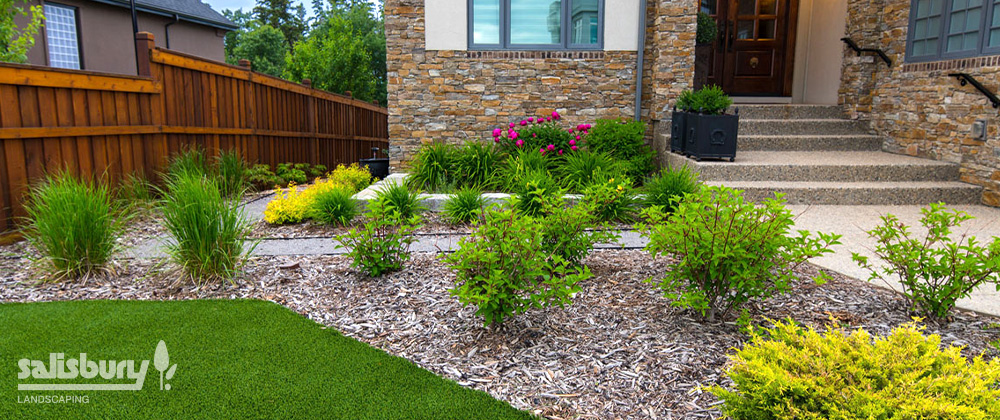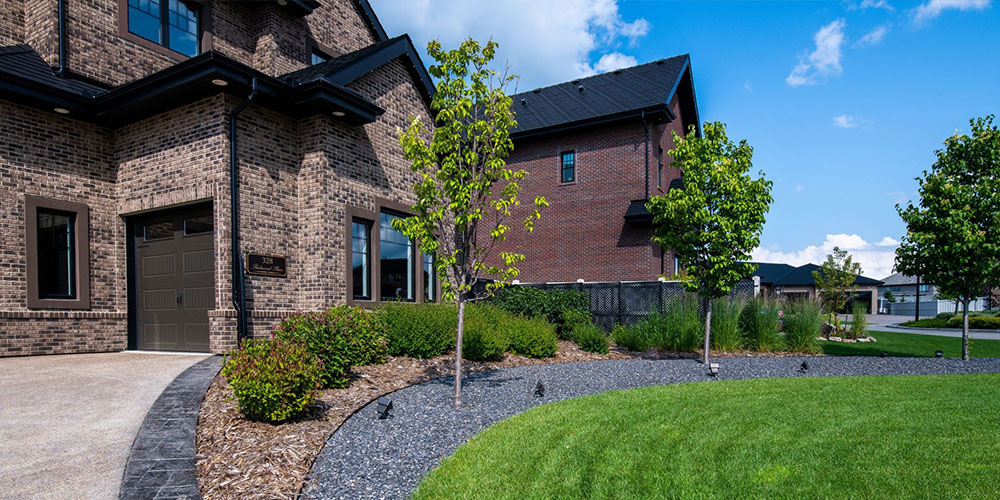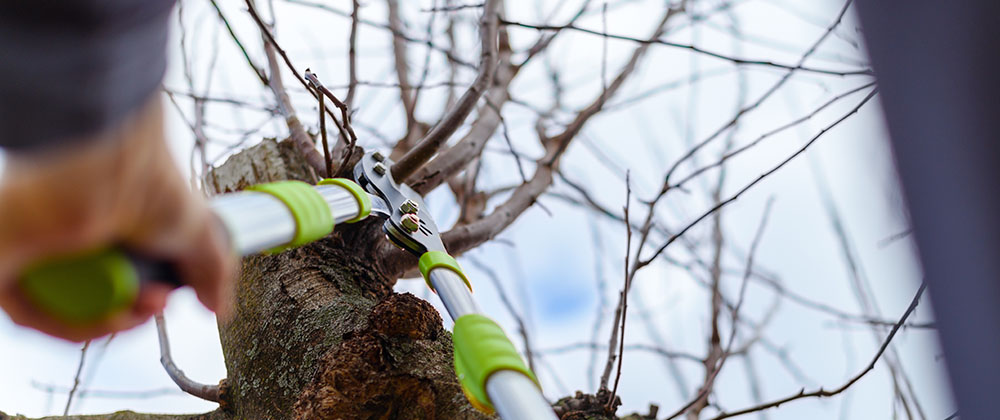Sidewalk salt is necessary for winter safety in Edmonton—anybody who has slipped on icy pavement will agree! However, it can do a great deal of damage to your soil, hardscapes, and landscape plants. It’s essential to protect your plants from salt burns, prevent the soil from becoming sterile, and protect your sidewalk and driveway from discolouration and erosion.
Protecting Your Soil and Landscape Plants from Salt Damage
If you’ve had trouble with salt damage in the landscape, follow this guide to proper prevention to protect yourself from taking a tumble in the winter while also protecting your plants and soil.


Border Your Pathways With Taller Pavers
An elevated border around your pathways will help keep salt contained so it doesn’t spread from the sidewalk to the lawn or garden. You can also use plastic garden edging material to create a barrier between the sidewalk and the soil, which will prevent the salt from leaching into the soil.
Spread Pelletized Gypsum Soil Conditioner Across the Landscape
Lots of folks ask us how to neutralize salt in the soil. Luckily, it’s not difficult at all! When sodium chloride gets wet, the sodium and chlorine molecules separate, and your plants will absorb them, inhibiting the absorption of nutrients like potassium and phosphorus. Your plants will struggle to photosynthesize without these essential nutrients, turning yellow and weak. Salt also draws out moisture from the soil, leading to dehydrated plants. Pelletized gypsum will replace the salt with calcium and sulfur, helping to repair the grass and encourage new growth.


Reseal Your Pavers
Every 3–5 years, it’s a good idea to apply sealant on your pavers; this will help reduce damage, erosion, and discolouration. Some finishes can even help to make your pavers look brighter! If you’re unsure how to apply it on your own, you’re welcome to call up our landscape design team, and we can help give you some direction.
If your landscape has visible damage throughout your grass and plants, spreading gypsum soil conditioner can make a big difference! It replaces sodium and chlorine with calcium and sulphur, which will help your plants bounce back.
In Winter, Wrap All Landscape Plants Near Roads and Sidewalks
Salt damage can often occur from snowblowers, cars, or snowplows blasting salt from roads and sidewalks toward your plants. Even if you don’t use deicers on your hardscapes, the stuff they apply on city streets can make its way into your landscape. Burlap is an excellent material for wrapping your trees and shrubs—just cover them up and secure the material with twine!. Most landscape plants are susceptible to damage, but evergreens are particularly vulnerable to burns—the needles will turn yellow and brown!


Use Less Salt and Mix It With Sand
Don’t use more than you need! To further reduce the amount needed, mixing in salt can help create traction across icy surfaces to make them less slippery.
Sweep It Away Once the Ice Melts
If salt is left behind on the sidewalk once the ice is gone, get rid of it! Sweep that stuff up and toss it away, or keep it in a bucket to reapply later, if needed.


Plant Salt-Tolerant Landscape Plants
Some landscape plants are more resistant to damage than others—but keep in mind, they aren’t invincible! If you’re having trouble avoiding damage from deicers, planting resistant varieties can help prevent the damage from being catastrophic. Try planting Junipers—they’re salt-tolerant, hardy landscape plants that you can safely plant near sidewalks.
If you need any supplies to protect your landscape plants from salt damage in Edmonton, pop into one of our Salisbury locations in St. Albert and Sherwood Park! We’ve got plenty of tree wraps, soil amendments, paver sealants, and deicer alternatives. Don’t hesitate to ask us for help if you’re unsure how to proceed, we’re always happy to help!




